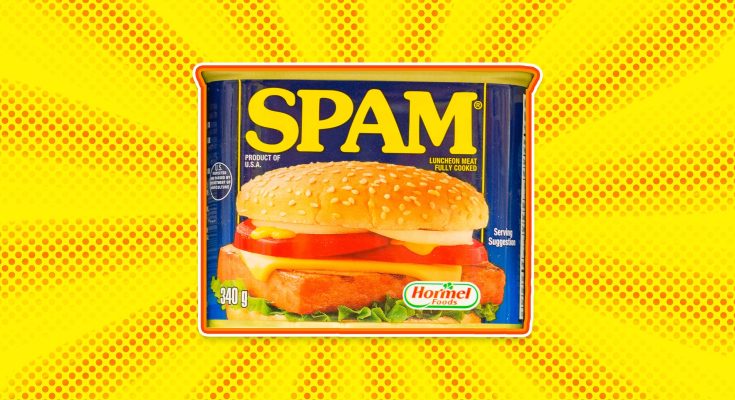The Enduring Legacy of SPAM: More Than Just Canned Meat
SPAM. The very name conjures images: a bright blue and yellow can, a ubiquitous presence in pantries worldwide, and a surprisingly rich history spanning generations. But what is this iconic foodstuff, and why has it endured for nearly a century? Let’s delve into the fascinating world of SPAM.
The Story Behind the Name: A Delicious Mystery
The Great SPAM Name Debate
While many believe SPAM is an acronym, Hormel Foods, the company behind this global phenomenon, has never officially revealed the meaning. Several popular theories abound, each adding to the brand’s intriguing mystique. “Shoulder of Pork And Ham” is a common, though unverified, explanation. “Specially Processed American Meat” is another, often cited with a humorous tone. Perhaps the most credible theory points to “Spiced Ham,” a suggestion from a contest winner who received a $100 prize. Regardless of the truth, the playful ambiguity has undeniably boosted SPAM’s appeal and contributed to its enduring popularity. The true origin, according to Hormel, remains a closely guarded secret known only to a select few former executives—a carefully cultivated mystery that’s become part of the brand’s charm.
Deconstructing SPAM: Ingredients and Production
What’s Inside That Can?
SPAM Classic’s simple recipe features just six core ingredients: chopped pork shoulder and ham, salt, water, modified potato starch (a binder), sugar, and sodium nitrite (a preservative). Crucially, the original recipe contains no artificial flavors or colors, a fact confirmed by Hormel and numerous food databases. The process itself is remarkably efficient: pork and ham are ground and thoroughly mixed with the other ingredients. The mixture is then portioned into cans, vacuum-sealed, and pressure-cooked directly within the can, ensuring both sterilization and an extended shelf life. This process eliminates the need for refrigeration, contributing significantly to its popularity, especially during wartime and in regions with limited refrigeration options.
Beyond the Classic: A World of SPAM Flavors
Expanding the SPAM Universe
While the original SPAM Classic remains a beloved staple, Hormel has expanded the product line considerably over the years, offering a diverse array of flavors to appeal to different palates and dietary preferences. From SPAM Lite (reduced fat, sodium, and calories) and SPAM Less Sodium to more adventurous options like Jalapeño, Teriyaki, Hickory Smoke, Hot & Spicy, and even Tocino (inspired by Filipino cuisine) and Korean BBQ, the variations are extensive. Seasonal and limited-edition flavors, such as Pumpkin Spice, also periodically appear, adding a touch of novelty to the brand. This expansion demonstrates Hormel’s commitment to adapting to changing consumer preferences and exploring new culinary possibilities.

SPAM’s Global Journey: A Culinary Icon
A World War II Legacy
SPAM’s global prominence took off during World War II. Over 100 million pounds were shipped overseas to feed American troops, leading to a complex love-hate relationship amongst soldiers who consumed it daily. This widespread exposure, however, catapulted SPAM to international recognition, particularly in the UK, the Philippines, and across the Pacific islands.
SPAM Around the World

Following the war, SPAM became deeply ingrained in various cultures. In Hawaii, SPAM musubi (SPAM, rice, and seaweed) is a beloved snack. In South Korea, it’s considered a luxury gift, often featured in Chuseok holiday hampers. The Philippines uses it frequently in breakfast dishes, and Guam boasts one of the highest per capita consumptions globally. Its versatility, combined with its extended shelf life, allowed it to seamlessly integrate into diverse culinary traditions.
Nutritional Considerations and Common Misconceptions
Understanding the Nutritional Profile
A typical serving of SPAM Classic contains approximately 180 calories, 16g of fat (6g saturated), 7g of protein, 1g of carbohydrate, and a substantial 790mg of sodium (about 33% of the recommended daily intake). This high sodium and fat content highlights the importance of moderation. However, Hormel’s Lite and Less Sodium options cater to health-conscious consumers. As with all processed meats, health professionals generally recommend limiting consumption to mitigate long-term health risks.

Busting SPAM Myths
Several misconceptions surround SPAM. It’s often mistakenly labeled “mystery meat,” but the ingredients are clearly stated. It’s fully cooked, not raw, and ready to eat straight from the can. Its popularity isn’t confined to the U.S.; it’s a global culinary phenomenon, especially in the Asia-Pacific region.
Cooking with SPAM: Endless Possibilities
SPAM in the Kitchen
:max_bytes(150000):strip_icc()/__opt__aboutcom__coeus__resources__content_migration__serious_eats__seriouseats.com__images__2012__07__20120724-spam-variations-primary-82c7ba1c400143fabb461380d3f1e603.jpg)
SPAM’s versatility is a significant factor in its enduring appeal. From simple fried slices with eggs and toast to elaborate dishes like SPAM musubi, cubed SPAM in fried rice, SPAM tacos, or as an ingredient in Korean stews like budae jjigae, the culinary possibilities are vast. Its savory profile complements sweet, salty, spicy, and savory flavors, making it adaptable to numerous cuisines.
Conclusion: The Enduring Appeal of SPAM
SPAM is more than just canned meat; it’s a cultural phenomenon. Its story embodies resilience, wartime history, global culinary fusion, and ingenious food innovation. While the origin of its name remains shrouded in mystery, its ingredients and culinary value are undeniably clear. Its longevity, convenience, and unique flavor profile continue to make it a beloved kitchen staple across the globe, proving that a simple can of meat can have a truly remarkable story.




